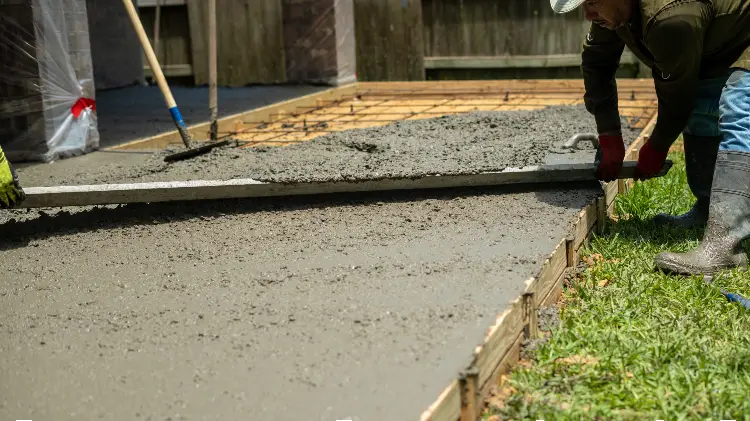Patios are great additions to any house, but typically, homeowners have to consider the costs of hiring a builder versus the advantages of having a patio. But if you want to cut costs, think about doing a concrete patio as one of your next do-it-yourself projects. Do visit smbconcrete.com
Choose the patio’s location, size, and proportions before beginning to build a concrete patio. The size of the patio will dictate how much concrete and if a mixer are required. To prevent levelling uneven ground, select a level region. To find out if a permit is needed and whether the patio is near any property lines, check the local building codes. Find any subsurface utilities, septic tanks, or other features before you start digging.
To find the slope, drive stakes into the patio area’s corners and string between them. As needed, reposition the region. Using gardening tools, remove grass, roots, weeds, and topsoil from the area that is roped off. To make driving the stakes into the ground simpler, trim the ends to a point.
Choose whether you want your patio to be raised or level before digging the hole—4 inches for raised and 8 inches for level. If you intend to use heavy items, such as a brick grill, lay a concrete base for stability. Over the compacted earth, add a layer of crushed rock or gravel, about 4 inches deep. To avoid shifting or breaking, make sure the crushed rock or gravel is evenly distributed and compacted.
To support the outer edge, drive pegs at least two feet apart along the new patio’s perimeter. Make certain that the stakes are deeply buried in the dirt. Patios should have a typical slope of 1/8 per foot to allow for water runoff. When working with damp concrete, use robust wood because lighter wood may flex or crack. Use steel concrete forms to help prevent this problem.
Cut 2x4s to make a frame or form that will keep the concrete in place to construct a patio. For stability, line the 2x4s with the patio’s string border and fasten them to the stakes. Make sure the forms are level and that the stake tips are cut off. To reduce cracking while pouring concrete close to a house or other structure, create an isolation joint between the concrete and the surrounding surface.
Attach Iso-strip-off or asphalt-impregnated fibre sheets to the surface or wall. Apply a layer of vegetable oil or a commercial releasing agent on the form boards to stop the concrete from sticking to them.
Use a mixer or your hands to mix concrete, as directed on the bags. Using a ramp or 2x4s, pour the concrete into the patio area. Using a 2×4 level, level the top, then use a bull float to smooth the surface. Include finishing details such as control grooves and rounded edges. To prevent chipping, remove the form boards, cover with plastic or a curing substance, and let the concrete cure for at least two days.

